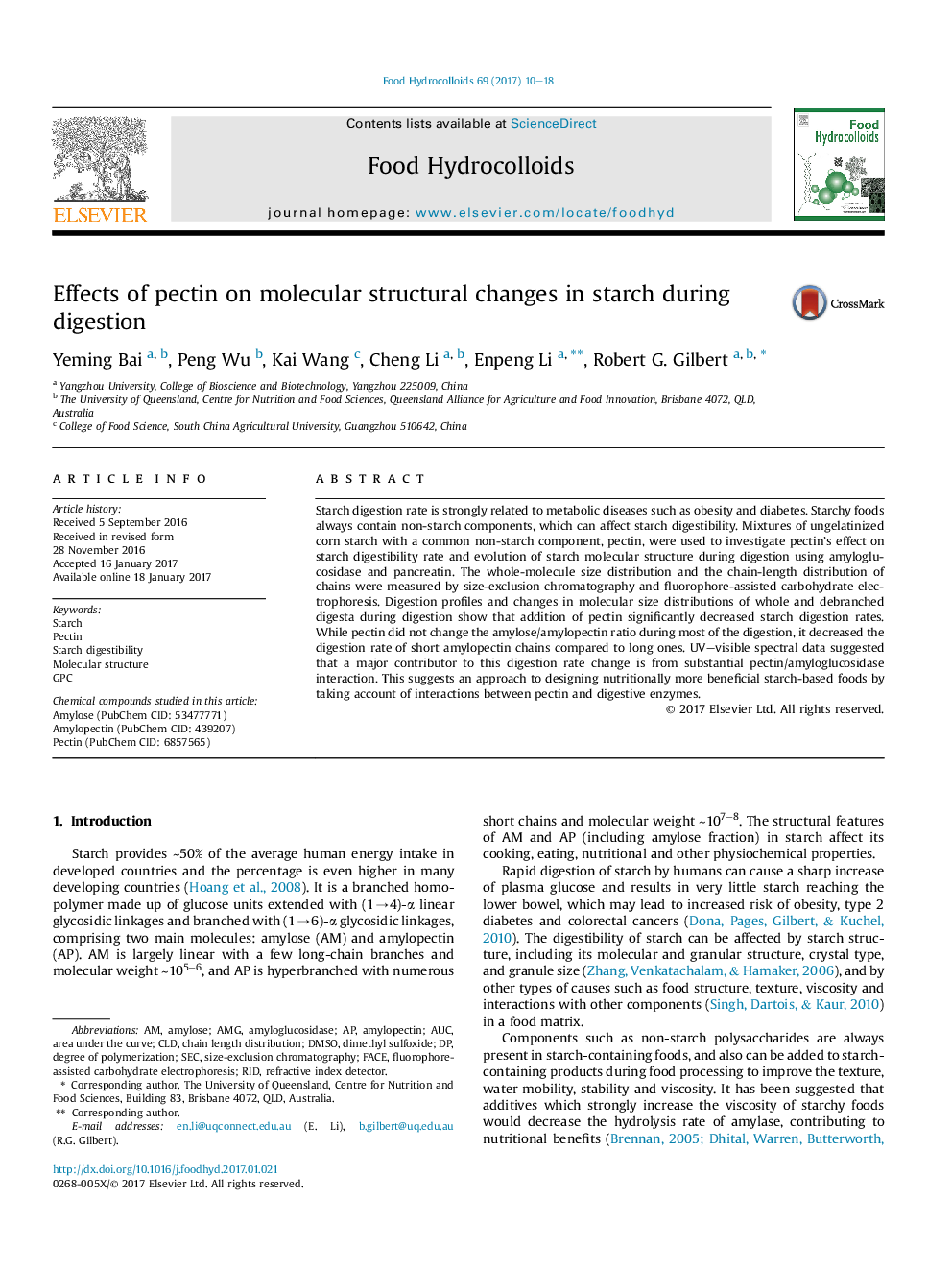| Article ID | Journal | Published Year | Pages | File Type |
|---|---|---|---|---|
| 4983893 | Food Hydrocolloids | 2017 | 9 Pages |
•Addition of pectin slows starch digestion rate.•Amylose to amylopectin ratio remains unchanged during digestion with pectin.•Longer amylopectin chains digested slower with addition of pectin.•Interaction between amyloglucosidase and pectin causes digestion rate reduction.
Starch digestion rate is strongly related to metabolic diseases such as obesity and diabetes. Starchy foods always contain non-starch components, which can affect starch digestibility. Mixtures of ungelatinized corn starch with a common non-starch component, pectin, were used to investigate pectin’s effect on starch digestibility rate and evolution of starch molecular structure during digestion using amyloglucosidase and pancreatin. The whole-molecule size distribution and the chain-length distribution of chains were measured by size-exclusion chromatography and fluorophore-assisted carbohydrate electrophoresis. Digestion profiles and changes in molecular size distributions of whole and debranched digesta during digestion show that addition of pectin significantly decreased starch digestion rates. While pectin did not change the amylose/amylopectin ratio during most of the digestion, it decreased the digestion rate of short amylopectin chains compared to long ones. UV–visible spectral data suggested that a major contributor to this digestion rate change is from substantial pectin/amyloglucosidase interaction. This suggests an approach to designing nutritionally more beneficial starch-based foods by taking account of interactions between pectin and digestive enzymes.
Graphical abstractFigure optionsDownload full-size imageDownload high-quality image (135 K)Download as PowerPoint slide
